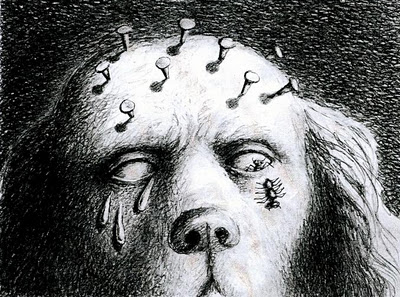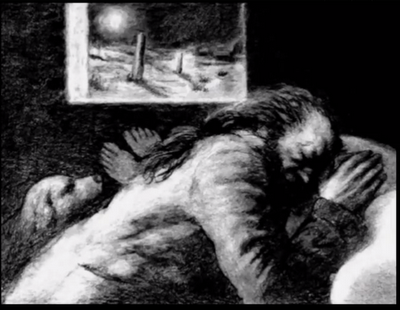By late 1963, Cassius Clay (he haven’t changed his name to Muhammad Ali yet*) had become the top contender for Sonny Liston‘s title. The fight was set for February 25, 1964, in Miami. Liston was an intimidating personality, a dominating fighter with a criminal past and ties to the mob. Based on Clay’s uninspired performance against Jones and Cooper in his previous two fights, and Liston’s destruction of former heavyweight champion Floyd Patterson in two first-round knock outs, Clay was a 7–1 underdog. Despite this, Clay taunted Liston during the pre-fight buildup, dubbing him “the big ugly bear.”
Clay began taunting and provoking Liston almost immediately after the two agreed to fight. He purchased a bus and had it emblazoned with the words “Liston Must Go In Eight.” On the day of the contract signing, he drove it to Liston’s home in Denver, waking the champion (with the press in tow) at 3:00 a.m. shouting, “Come on out of there. I’m gonna whip you now.” Liston had just moved into a white neighborhood and was furious at the attention this caused. Clay took to driving his entourage in the bus to the site in Surfside, Florida where Liston (nicknamed the “Big Bear”) was training, and repeatedly called Liston the “big, ugly bear”. Liston grew increasingly irritated as the motor-mouthed Clay continued hurling insults (“After the fight, I’m gonna build myself a pretty home and use him as a bearskin rug. Liston even smells like a bear. I’m gonna give him to the local zoo after I whup him… if Sonny Liston whups me, I’ll kiss his feet in the ring, crawl out of the ring on my knees, tell him he’s the greatest, and catch the next jet out of the country.”). He declared that he would “float like a butterfly and sting like a bee,” and, summarizing his strategy for avoiding Liston’s assaults, said, “Your hands can’t hit what your eyes can’t see.” Clay insisted to a skeptical press that he would knock out Liston in eight rounds (Former Light Heavyweight Champion José Torres, in his 1971 biography of Ali, Sting Like a Bee, said that as of 1963, Ali’s prophetic poems had correctly predicted the exact round he would stop an opponent 12 times).
When Clay won, he became the youngest boxer (22 years old) to take the title from a reigning heavyweight champion, though Floyd Patterson was the youngest to win the heavyweight championship at 21, during an elimination bout following Rocky Marciano‘s retirement. Mike Tyson broke both records in 1986 when he defeated Trevor Berbick to win the heavyweight title at age 20.
*On March 6, 1964, Islam leader Elijah Muhammad announced in a recorded statement played over the radio that Clay would be renamed Muhammad Ali. Muhammad means “worthy of all praises,” while Ali means “most high.”
 The Soul of a Butterfly is the autobiography of Muhammad Ali. It is written in collaboration with his daughter, Hana Yasmeen Ali.It is not a comprehensive autobiography but a breakdown of the important events and experiences in his life; this is suggested in the book’s subtitle, Reflections on life’s journey. The book includes some of his and his daughter’s poetry, and snippets of Sufi thought.
The Soul of a Butterfly is the autobiography of Muhammad Ali. It is written in collaboration with his daughter, Hana Yasmeen Ali.It is not a comprehensive autobiography but a breakdown of the important events and experiences in his life; this is suggested in the book’s subtitle, Reflections on life’s journey. The book includes some of his and his daughter’s poetry, and snippets of Sufi thought.




















